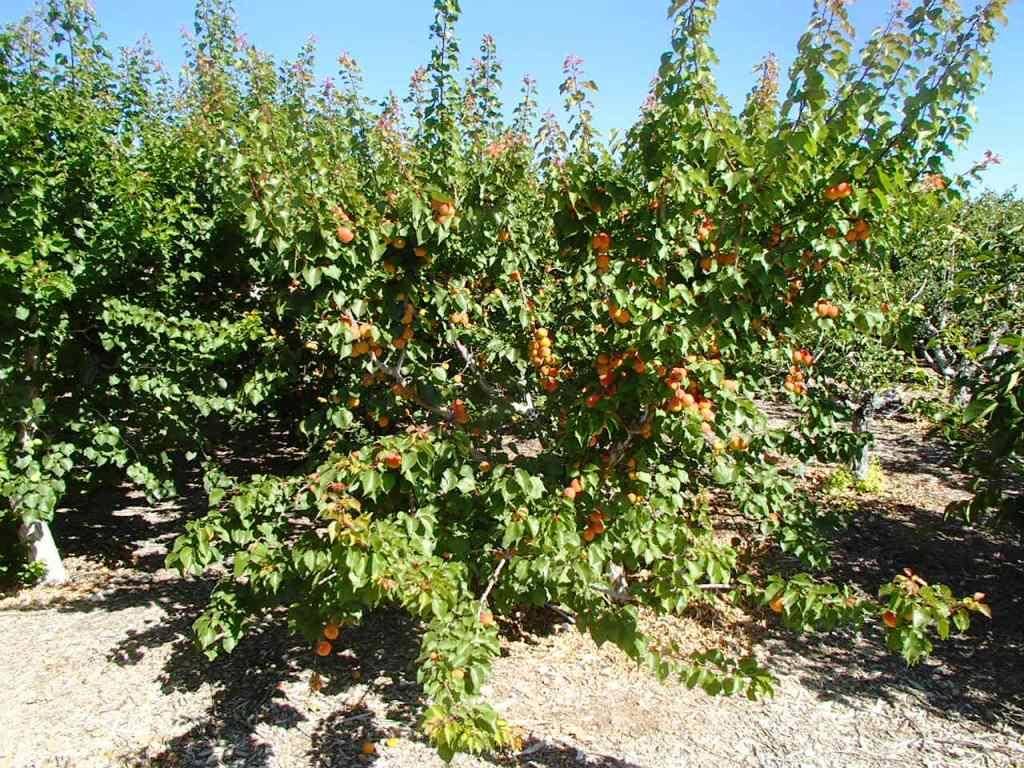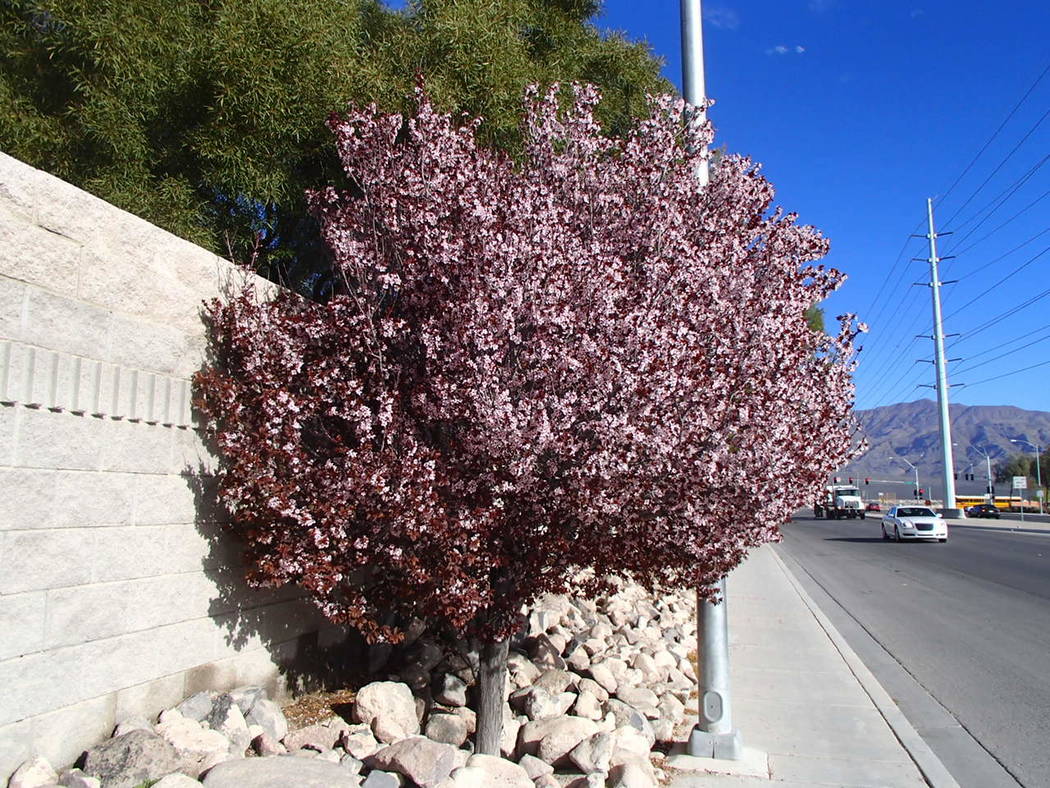Lack of fruit could be pollination problem


Thank you for your support of my landscape design class beginning in July. The class size is limited, and the eight-week class I offered filled quickly.
I am currently working on a second class for those who wanted to attend but couldn’t sign up. I will announce the second class in the Review-Journal and contact those who sent me an email directly.
This class will give you step-by-step directions on how to create your individualized landscape design. This design will be your own creation and address your specific personal and family needs.
I will be there to coach you through the process and make sure you have a landscape design that you can be proud of.
Someone from Sun City Summerlin informed me of a hawk that has set up residence near the 8900 block of Mountain Gate Drive. Evidently, this hawk has done a great job keeping birds out of the area that normally feast on backyard fruit crops.
Unfortunately, they are very protective of their nesting spot and may chase away any two- and four-legged visitors to the area. Please remember this is a protected species and give them their space.
Q: This year our apricot tree hardly produced enough fruit to bother making jam. Is it possible our warmish winter was a factor? We don’t know if this variety is a low-chill variety, since it came with the house. Has anyone else mentioned low production with apricots this year?
A: We have about 12 different varieties of apricots at the Ahern Orchard, and I oversaw about 10 varieties at the University Orchard. These apricots ranged in chilling hours but received enough cold winter temperatures to satisfy their chilling requirements for over 20 years. The light fruit set was probably due to our spring weather.
If the tree was loaded with flowers but produced very little fruit, it was a pollination problem, not because of a lack of winter chilling.
The weather was mostly cold during February, when apricots and many peaches were flowering. Bee activity was light due to cold weather and overcast skies. Yes, bees are needed for pollination.
I was watching the flowers in February, and visits by honeybees were very light when flowers were open. The early apricot varieties, Katy and Flavor Delight (really an aprium), set a very light fruit crop and were harvested over the past three weeks.
A light fruit set was true also of some plums and pluots. It depends when flowers were open for pollination.
Cool weather during fruit development also affects the sugar content of fruit. Cool temperatures result in fruit with less sugar content and more acidity. This is also true of grapes and many other fruit.
It was not a good year for some apricots and peach varieties if they were flowering during cool weather and skies were overcast. Our spring weather was strange and not normal for us.
I am confident next year we will be back to normal and apricots should have a heavy fruit load.
Q: I have some trees and shrubs that produce fruit and seed I don’t want. Can I spray them and eliminate the fruit and seed? What’s the best spray to use?
A: Probably the most popular fruit eliminator on the market is Florel. It is synthetic but mimics natural plant hormones.
I have never used it for eliminating fruit on anything but olives. The label does allow you to use it on many other plants for fruit elimination. Read the label before you buy it.
The problem with plants not listed on the label is knowing how much to mix in the spray. For this product to work, the flowers must be open, and the spray must come in contact with the open flower.
Since flowers on trees open over a period of time, flowers on the top, south and west sides open first. Spray the tree twice to get good fruit control. Spray the plant when 20 percent of the flowers are open first and repeat the spray in one or two weeks when it is 80 percent of full bloom. It won’t give you 100 percent control, but spraying twice increases how much of the fruit is controlled.
I can’t tell you how many days to wait for the second spray, because it varies with the weather. If temperatures are hot, flowering will finish in two weeks. If the weather is cool, the time of flowering could extend as long as three to four weeks. Play it by ear.
Q: My ocotillo appears to be dying. It was planted this year, and the left side has lost all its green leaves, but the right side looks perfectly OK. Do you have any ideas what happened?
A: Yes, I have seen it before. It is probably because it is watered too often, the soil didn’t drain water fast enough and, consequently, some roots rotted. It is a common problem with some desert-adapted plants. They don’t like soils that are kept wet.
When roots begin rotting on one side of a plant, it can lead to dieback in the tops. If leaves first came out and then died, it means water stopped getting to the leaves because roots died. If roots are dead when it is planted, leaves may come out and then die back, or the entire plant can die.
Roots can die after it has been planted, or they can be dead at the time of planting. Partial root death can be caused by poor storage and handling conditions at the nursery. But the usual reason is because it is watered too often after planting.
Let’s cover the basics of planting an ocotillo. Dig the hole three times the size of its roots. Amend the soil with compost, about 50/50, and use this soil for planting. As you are planting, add water to the soil in the hole to settle it and remove air pockets.
n Cut it loose. Ocotillo stems are tied together so they don’t get damaged when they are in storage and transported. After planting, cut the stems loose and let them spring outward.
n Stake it. The ocotillo has very small roots compared to its top. Grow enough roots so it can support top growth.
Frequently, the plant will not stay upright after planting because it is top heavy. Use rebar to stake the plant in three locations to immobilize roots. Tie rebar tostems so that the roots can’t move. You might have to leave it staked for over a year.
n Water it. Water it no more than once a week. At first, water near the base of the plant to supply the roots water. Use a 2-foot diameter basin to hold the water near the roots. As the plant shows signs of growth, apply water further from its base. This encourages roots to grow outward, away from the base, and support the top.
Some people will spray the stems with water daily after planting. They claim it helps establish the plant. There is no solid evidence to support this idea, but it may help.
Once established, ocotillo should be watered more often than cacti but less often than nondesert plants. Remember, they don’t like wet soils. They are a desert plant. Watering daily would be a big mistake.
Q: I have an ornamental, purple leaf plum that’s producing fruit. My dog has been eating the fruit. Is it safe to eat?
A: The purple leaf plum used in landscaping was selected as a variant of a plum used in the orchard industry for many years. A similar plum that produces more fruit, cherry plum or myrobalan plum, is grown for its tart fruit with a very high sugar content.
Two varieties of this plum, Sprite and Delight, are personal favorites of mine. Another variant of this fruit tree is used as a rootstock for other plums. A very versatile plum.
The purple leaf plums (there are several different types) were selected for their leaf color and low fruit production but ornamental beauty. However, occasionally they do produce a fair amount of edible fruit. This fruit is good for making jams and jellies, adding to pies and pastries and flavoring gelato and juices but tart when eating fresh.
Bob Morris is a horticulture expert and professor emeritus of the University of Nevada, Las Vegas. Visit his blog at xtremehorticulture.blogspot.com. Send questions to Extremehort@aol.com.













